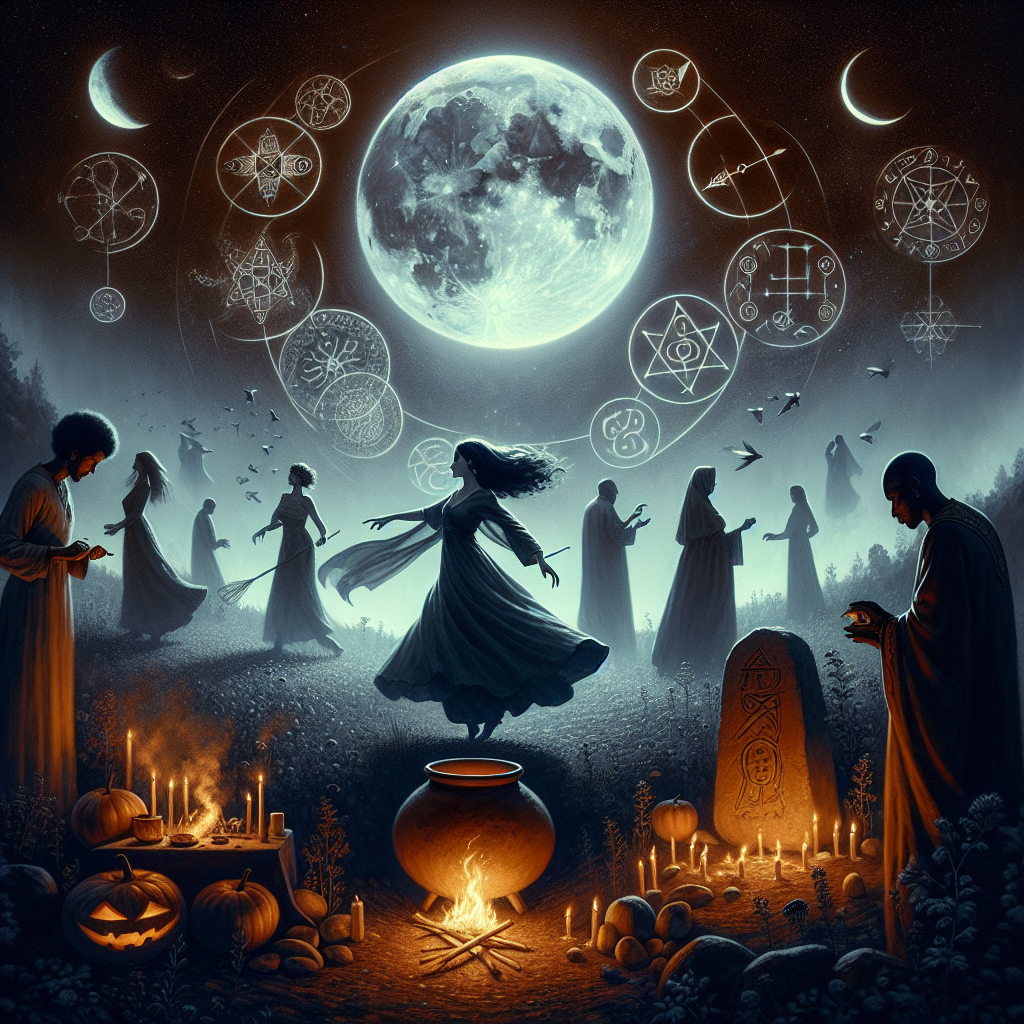As an Amazon Associate I earn from qualifying purchases.
↻
Last updated: December 24, 2025

Samhain marks one of the most significant festivals of the pagan wheel of the year. Traditionally celebrated from October 31st to November 1st, Samhain is considered to be a time when the veil between the living and the dead is at its thinnest. It is believed that during this period, spirits can more easily come into our world and mingle with the living.
Historically, Samhain is a Celtic festival that signaled the end of the harvest season and the beginning of winter or the “darker half” of the year. It was a time for introspection, honoring ancestors, and preparing for the coming cold months. Today, modern pagans and Wiccans observe Samhain as a sacred time to reflect, honor ancestral spirits, and celebrate the cycle of life and death.
Creating an altar is one way to engage with the energy of Samhain. People often decorate their altars with items such as candles, photographs of departed loved ones, autumn leaves, pomegranates, pumpkins, and symbols of death and rebirth. The simple act of lighting a candle and spending a moment to remember those who have passed away can serve as a powerful personal observance of the thinning veil.
Another common practice is the ‘Dumb Supper' – a silent meal shared with the spirits. Participants set an extra place at the table to invite the spirits of their ancestors to join them. This meal is eaten in silence to honor the dead and reflect on their influence and presence in our lives. The Dumb Supper often includes seasonal foods and dishes that were favorites of the deceased relatives.
For those looking for a more communal experience, Samhain is also a time for gatherings and public rituals. Groups may come together to perform ceremonies that involve drumming, chanting, or dancing around a bonfire. It's believed that these collective activities not only honor the dead but also draw community members closer as they enter the winter months.
Storytelling is another compelling tradition during Samhain. In the flickering candlelight, people share tales of their ancestors, ghost stories, or myths about gods and goddesses associated with death and rebirth. These stories serve as both entertainment and a teaching tool, passing on wisdom and maintaining the connection between past and present.
In recent years, Samhain has gained popularity beyond pagan and Wiccan communities, with many people drawn to its themes of transformation and connection to the natural world. Despite the diverse ways in which Samhain is celebrated, at its core, it remains a poignant reminder of the cycle of life and death, a celebration of endings and beginnings, and an opportunity to pause and reflect on our own mortality and the legacy we wish to leave behind.
Amazon and the Amazon logo are trademarks of Amazon.com, Inc, or its affiliates.
Continue Your Magical Journey
Free Witchcraft Starter Kit
Get 6 free printable PDFs: grimoire pages, moon calendar, spells, crystals, herbs, and tarot journal.
We respect your privacy. Unsubscribe anytime.
Enhance Your Practice
As an Amazon Associate, I earn from qualifying purchases.

